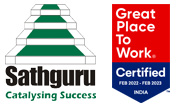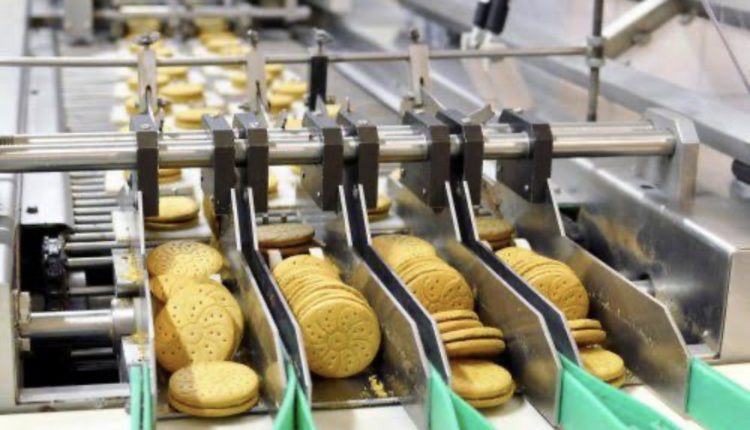The Indian food processing sector was valued at US$ 328 billion in 2018 and is expected to reach US$ 535 billion in 2025-26. India processes only about 10 percent of its agri-output while most of the processing is classified as primary processing. The rise in India-based start-ups in the past five years is also driving the food processing industry. Food processing companies account for 30 percent of the overall food start-ups in India.
In order to keep our food processing industry on a cutting edge and in step with the latest developments, adoption of and adaptation to new technology is an imperative. This has become all the more urgent in light of the exploding demand seen for packaged food and drinks in the wake of the prolonged home lockdown in response to the COVID-19 pandemic. Many of the new technologies in food processing to have come into the market provide innovative solutions, address the needs of the market and assist in managing the costs effectively. In addition, technology also helps to transform and progressively evolve the consumer behaviour.
Below are some technology trends in food processing whose adoption can help the industry establish its strong footing in a post COVID world:
Rising Interest in High Pressure Processing Among Companies
High-Pressure Processing (HPP) is a non-thermal food preservation process that kills harmful microorganisms with the application of intensive pressure in the ranges of 400-600Mpa. In addition to its high pressure, the HPP has minimal effects on flavor, appearance, and nutrition value. The pressure technology is more suitable for liquids and high moisture content solid foods. HPP in the food sector is widely used in the preservation of fruits and vegetable products such as jams, puree, juices, meat products, and fish products. However, in India, the application of HPP is limited to some products such as fruit and vegetable juice and RTE meals. The concept of HPP in fresh natural juice in India was first introduced by Raw Pressery in 2013.
Slowly, the HPP technology has now expanded to RTE segments in India as well. For example, in Jan 2020, NuTy, a venture of Tulita Ahara, introduced ready-to-eat curries and meals using HPP technology. Earlier the retort technology, developed and transferred to industry by DFRL, was used for the RTE products in India. However, the off-flavor developed in the ethnic RTE products due to the usage of high temperatures in the retort process affected product quality. On the contrary, HPP technology due to its high pressure and low temperature retains the maximum flavor of the processed products. HPP can be explored in other food categories addressing the need for the natural food products.
Frozen Food Technology is Small but Growing
The Indian frozen food market is growing at a rate of 16 percent YoY in 2019, driven by a growing demand for natural products. The Individual Quick Freezing (IQF) is a superior freezing technology being introduced by some domestic companies in India. IQF is a quick freezing process as opposed to block freezing where larger ice crystals affect the quality of the product. IQF is applied to smaller pieces of fruits and vegetables, meat and fish products where the product pieces undergo fast freezing individually, which does not allow larger ice crystals to form. Companies such as Saraf Foods, Taj Frozen Food India, Capricorn Group, IQF Foods Limited, etc. produce IQF fruits and vegetable products.
Vacuum Frying and Freeze Drying are Gaining Momentum
Various start-ups in India have introduced healthy snacks such as vacuum frying and freeze-dried snacks. Companies like Frubites, Wayanad Organic Research, Crimz, Orbela Agro Foods etc. have introduced vacuum fried fruit snacks in India. In vacuum frying, the frying temperature is lower than the atmospheric frying due to the low pressure applied. The process of oil adsorption is different in vacuum frying compared to atmospheric frying. The low frying pressure during frying helps in reducing the oil content of the final product. A vacuum fried chips contain about 50-80 percent less fat than the regular/atmospheric fried chips and retain up to 95 percent of the nutrients. Companies are using vacuum frying or freeze-drying process for retaining the maximum nutrition, original flavor, and original shape of the product. Companies such as Saraf Foods have expanded from IQF B2B products to IQF based and freeze-dried consumer products such as fruit snacks. Vacuum frying and freeze-dried technologies are being used by the industry for a long time. However, the increase in product cost is the major restraint for the mass markets.
Sugar Reduction Technology Making Chocolate more Sweeter
The Indian Chocolate market valued around US$ 1.5 billion in 2018 with children segment accounting for a large share. With the rising concern of high sugar levels consumption among children due to the high consumption of chocolates, Indian food regulators released a regulation on high sugar, fat and salt products where the packaged food containing high fat, sugar and salt need to display red color coding on the front of the packet. In response to this situation, the chocolate market leader, Cadburylaunched a 30 percent less sugar dairy milk variant in India this year. Cadbury used a technology to render sugar crystals ‘hollow’ and thereby reducing the overall sugar content. The hollow sugar crystals formed by the structured sugar technology dissolve quickly in the mouth and stimulate the taste buds faster. It retains the actual sweetness and taste of the chocolate with reduced quantity of sugar.
With the growing interest among consumers for clean label and natural products, the technologies such as cold press, HPP, vacuum frying, IQF and sugar reduction technology among others seem promising for Indian food market. However, there is also need for exploring other food categories to make healthier products with the application of such technologies.
Author: Saujanya Suman – consultant at Sathguru Management Consultants in food processing domain
First Published in: India Retailing.com


